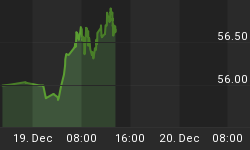As health experts warn about a looming, and perhaps imminent, third wave of the pandemic, data shows that the U.S. continues to pile on unemployment claims caused by a slow economic recovery.
The U.S. Bureau of Labor Statistics reported that total nonfarm payroll employment rose by 661,000 in September, while the unemployment rate declined to 7.9% from 8.4%.
That sounds phenomenal until you dig deeper into the jobs report.
The number of jobs added is actually the smallest since May, when “recovery” began.
In August, more than 1.5 million jobs were added, and job growth over both August and September largely reflects employers recalling workers that had been furloughed temporarily.
In other words, these aren’t new hires, and that skews the big picture significantly.
Among the unemployed, the number of persons on temporary layoff decreased by 1.5 million in September to 4.6 million. Even though this represents an improvement from 18.1 million in April, it is still 3.8 million higher than in February.
The Bureau also noted that the number of unemployed job leavers, which includes those who quit or voluntarily left, rose by 212,000 to 801,000 in the last month. Additionally, the number of permanent job losers increased by 345,000 to 3.8 million, jumping by 2.5 million since February.
As it stands, some 10.7 million Americans are still out of work, and around 1.5 million people filed initial unemployment claims last week. Such terrible news could mean that a recession could be looming. Related: Global Tech Stocks On Edge Over Trump TikTok Ban
A recent report by the Becker Friedman Institute at the University of Chicago projects that 42% of jobs lost in the pandemic are never coming back. And even if some jobs return, it’s not going to be immediate.
In a scenario in which the U.S. adds approximately 650,000 new jobs per month, it would take a year and a half to make up for lost jobs.
Marianne Wanamaker, a labor economist at the University of Tennessee, Knoxville, told The Wall Street Journal that the U.S. was not positioned to gain jobs rapidly as happened in May and June this year.
“The pace of job recovery apparent in today’s report suggests that we will be counting the employment recovery in years, not months or quarters,” Wanamaker said.
And full job market recovery isn’t highly prospective when the U.S. economy remains only partially open for business, and millions of people are still relying on government aid.
Unemployment benefits expired in late July and Congress was unable to successfully negotiate an extension or alteration. Now, a $300/week federal unemployment cushion issued by the government in early August is expiring in some states.
Small businesses are shutting down and bankruptcies are at a 10-year high. A survey from August by the National Federation of Independent Business Research Center (NFIB) found that 22% of small businesses that received Paycheck Protection Program (PPP) loans announced additional layoffs.
But it is not only small businesses that are announcing fresh layoffs. Major insurance, retail, oil and airline companies have announced more layoffs as the pace of recovery is slowing.
In the latest of such, Disney announced it would lay off 28,000 furloughed workers, mostly part-time employees, in the company's California theme park, while American Airlines and United Airlines said they would furlough 31,000 jobs combined as Federal-aid runs out.
By Michael Kern for Safehaven.com
More Top Reads From Safehaven.com:
















